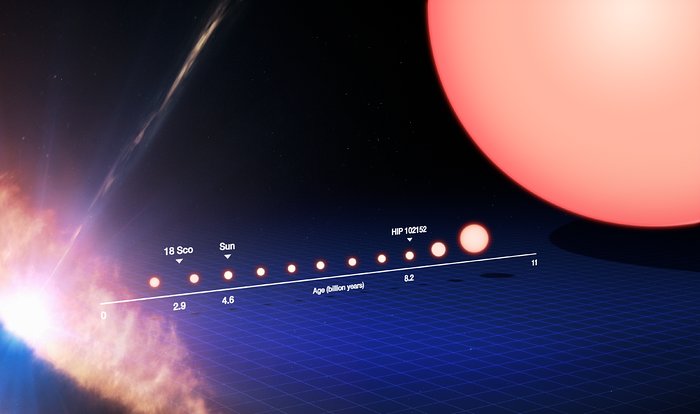The life cycle of a Sun-like star (annotated)
This image tracks the life of a Sun-like star, from its birth on the left side of the frame to its evolution into a red giant star on the right. On the left the star is seen as a protostar, embedded within a dusty disc of material as it forms. It later becomes a star like our Sun. After spending the majority of its life in this stage, the star's core begins to gradually heat up, the star expands and becomes redder until it transforms into a red giant.
Following this stage, the star will push its outer layers into the surrounding space to form an object known as a planetary nebula, while the core of the star itself will cool into a small, dense remnant called a white dwarf star.
Marked on the lower timeline are where our Sun and solar twins 18 Sco and HIP 102152 are in this life cycle. The Sun is 4.6 billion years old and 18 Sco is 2.9 billion years old, while the oldest solar twin is some 8.2 billion years old — the oldest solar twin ever identified. By studying HIP 102152, we can get a glimpse of what the future holds for our Sun.
This image is illustrative; the ages, sizes, and colours are approximate (not to scale). The protostar stage, on the far left of this image, can be some 2000 times larger than our Sun. The red giant stage, on the far right of this image, can be some 100 times larger than the Sun.
Credit:ESO/M. Kornmesser
About the Image
| Id: | eso1337a |
| Type: | Collage |
| Release date: | 28 August 2013, 15:30 |
| Related releases: | eso1337 |
| Size: | 3800 x 2250 px |
About the Object
| Name: | HIP 102152 |
| Type: | Milky Way : Star |
| Distance: | 250 light years |
| Category: | Stars |
